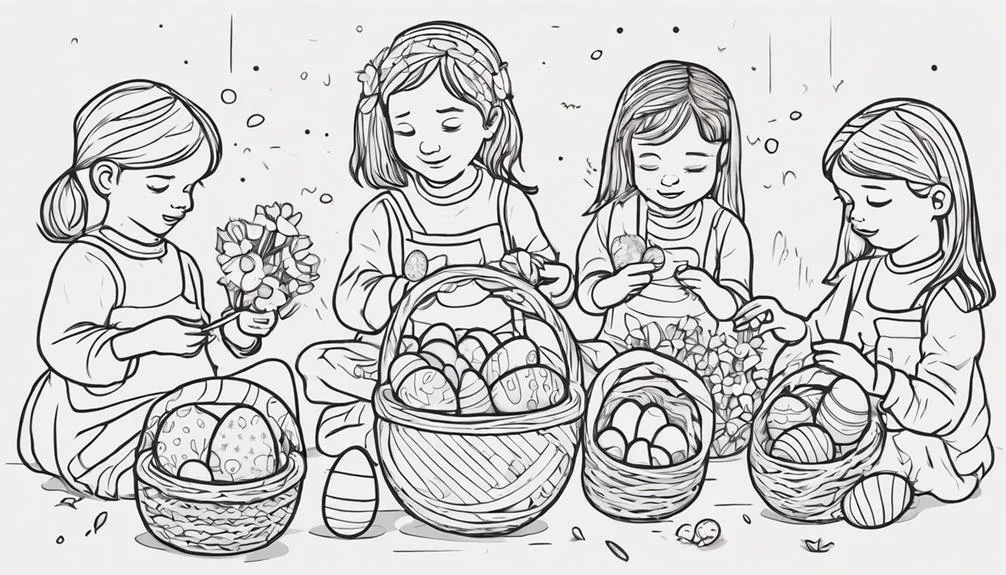Palm Sunday Crafts are just one of 14 fun activities for kids during Holy Week.
From hunting for Resurrection Eggs to making Palm Crosses, these activities help children learn about Easter’s significance in a fun way.
They offer different methods for kids to understand the Easter story and the events leading up to this major Christian holiday.
Check out these 14 exciting Holy Week activities to make this period memorable for your family.
Key Takeaways
- Engage kids in hands-on crafts and coloring activities to explore and celebrate Holy Week.
- Organize interactive egg hunts and scavenger hunts to make learning about Holy Week fun and educational.
- Foster spiritual connections through prayer gardens, journaling, and reflective experiences.
- Incorporate symbolic baking and traditional crafts to deepen understanding and create meaningful family memories.
1. Palm Sunday Crafts

Get ready to create some meaningful Palm Sunday crafts with these simple and engaging ideas. Palm Sunday traditions often involve the use of palms to symbolize Jesus’ entry into Jerusalem.
One creative palm project you can try is making palm leaf crosses. Simply fold and weave palm leaves together to form a small cross, symbolizing the significance of the day.
Another fun craft idea is to create palm leaf handprints. Trace your hand on green construction paper, cut out the shape, and then add details to make it look like a palm leaf. This activity not only celebrates Palm Sunday traditions but also allows for a personalized touch.
If you’re feeling more adventurous, you can make a palm branch wreath. Use real or faux palm branches to form a circular wreath, symbolizing victory and triumph. Add colorful ribbons or flowers for a decorative touch. These creative palm projects aren’t only enjoyable but also serve as a meaningful way to commemorate Palm Sunday.
2. Easter Story Coloring Pages
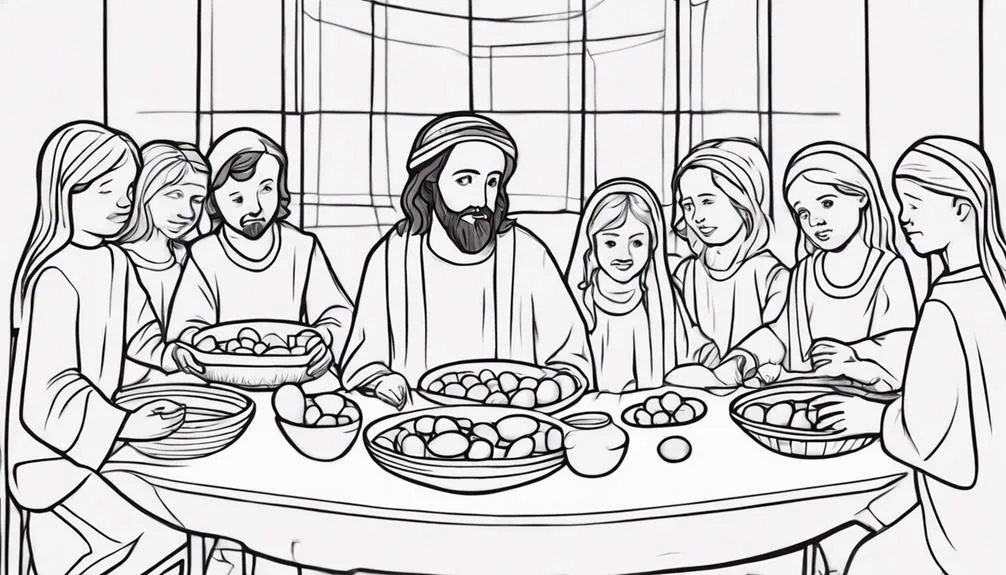
Looking to engage your kids in the Easter story in a fun and creative way? Easter story coloring pages are a fantastic way to introduce religious symbolism and encourage artistic expression in children. These coloring pages often depict key moments from the Easter story, such as Jesus’s triumphal entry into Jerusalem on Palm Sunday, the Last Supper, the crucifixion, and the resurrection.
By coloring these pages, kids can learn about the religious significance of Easter while also expressing their creativity through art. They can use different colors to symbolize emotions like joy, sadness, hope, and love, adding depth to their understanding of the Easter story. Additionally, coloring can be a calming and meditative activity, allowing children to reflect on the events of Holy Week in a peaceful way.
Whether it’s coloring Jesus carrying the cross or the empty tomb on Easter morning, these coloring pages provide a hands-on and engaging way for kids to connect with the story of Easter on a deeper level.
3. Resurrection Egg Hunt
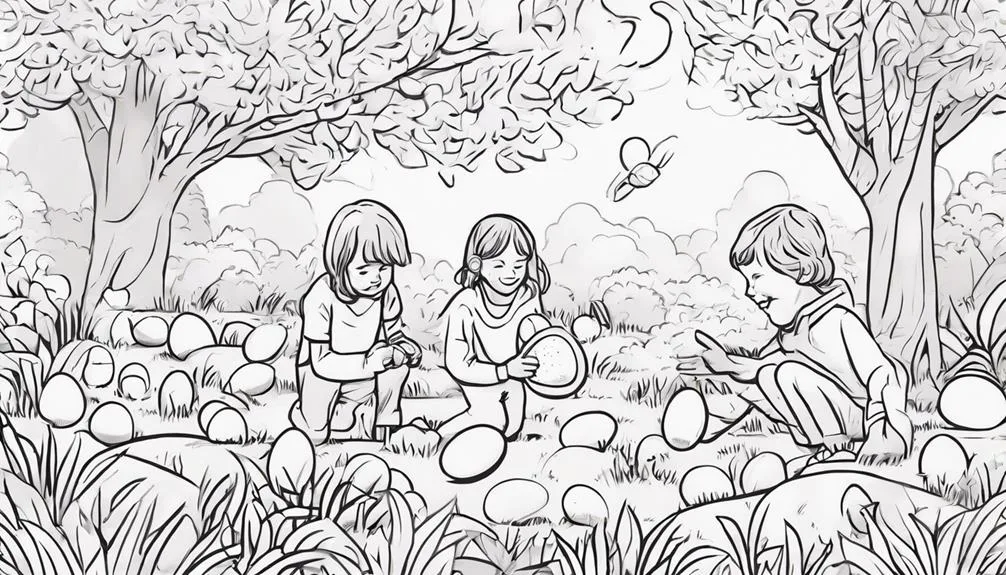
Engage in a unique and interactive way to educate children about the story of Easter with a Resurrection Egg Hunt. This activity combines the fun of an Easter egg hunt with the opportunity to teach kids about the religious significance of the holiday.
Here’s how you can make the most out of this experience:
- Egg Decorating: Before the hunt begins, set aside some time for kids to decorate the eggs that will be used in the hunt. Encourage them to get creative and incorporate symbols of Easter and resurrection.
- Faith Based Games: Along with the egg hunt, consider adding some faith-based games or activities that reinforce the story of Easter. This could include a quiz about the events leading up to the resurrection or a storytelling session.
- Interactive Learning: Use the Resurrection Egg Hunt as a way to engage children in interactive learning about the religious significance of Easter. Encourage them to ask questions and facilitate discussions about the story of Jesus’ resurrection.
4. Holy Week Scavenger Hunt
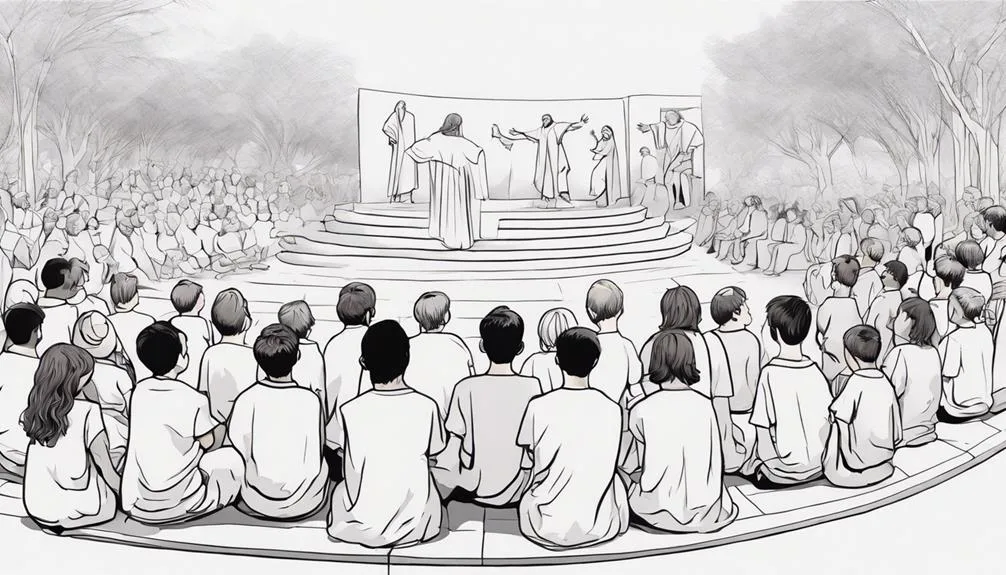
Set off on a journey of exploration during Holy Week with an enchanting Holy Week Scavenger Hunt for children. This activity combines the excitement of a scavenger hunt challenge with the intrigue of creative clues, making it a perfect way to engage kids in the story of Holy Week.
Encourage outdoor adventure and team collaboration by organizing this scavenger hunt in a park or garden. Divide the children into teams and provide each team with a list of clues related to the events of Holy Week. The clues could lead them to different stations where they learn about key moments such as Palm Sunday, the Last Supper, and the Crucifixion.
To create a vivid image of how this scavenger hunt might look, consider the following table:
| Station | Clue |
|---|---|
| Palm Sunday | Find a palm leaf and wave it high |
| Last Supper | Look for bread and grape juice |
| Crucifixion | Search for a cross made of twigs |
| Resurrection | Hunt for a hidden Easter egg |
Through this activity, children can learn about the significance of Holy Week in a fun and interactive way.
5. Last Supper Reenactment
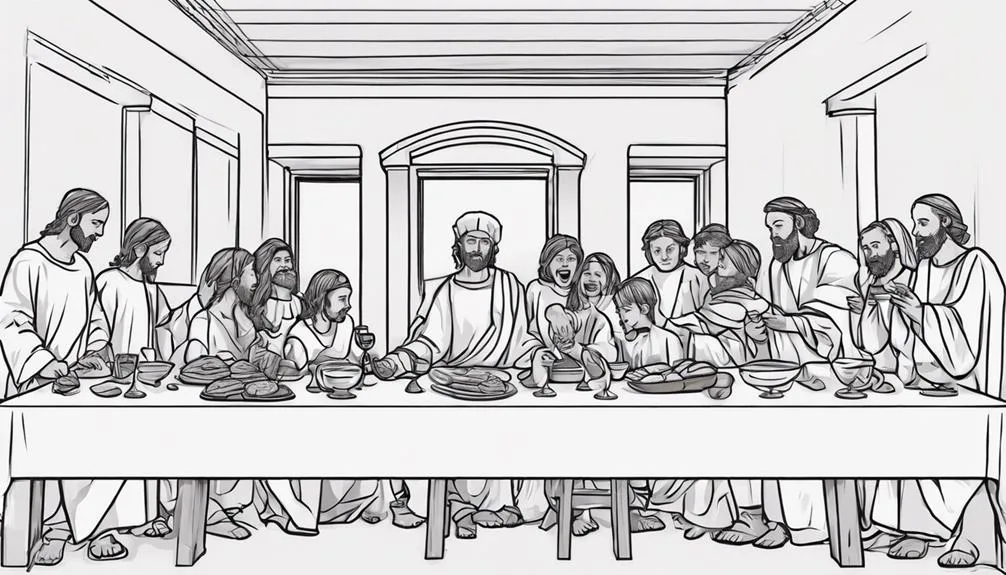
Prepare your little ones to step into the shoes of disciples and experience the Last Supper firsthand. To make the reenactment preparation meaningful and engaging, follow these tips:
- Costumes: Encourage your kids to dress in simple robes or tunics to resemble the disciples. This simple act can help them feel more connected to the event and understand the significance of the Last Supper.
- Setting the Scene: Arrange a long table with cushions on the floor to mimic the traditional seating style during the Last Supper. Use simple tableware and dim lighting to create an atmosphere of solemnity and reverence.
- Explaining the Symbolism: Before starting the symbolic meal, take a moment to explain the significance of each food item on the table. Discuss the bread as the body of Christ and the wine as his blood, helping your children understand the deeper meaning behind the Last Supper.
6. Decorate Easter Eggs

As you move on to the next activity, involve your kids in the colorful tradition of decorating Easter eggs. Hosting an egg dyeing party can be a fun way to kick off the Easter celebrations. Let the kids pick their favorite colors and watch their excitement as they dip the eggs into the vibrant dyes.
After the eggs are dyed, consider organizing an Easter egg hunt in the backyard. Hide the colorful eggs for the little ones to find, creating a joyful and interactive experience for all. To add a competitive twist, you could also host an egg decorating contest. Encourage the kids to get creative with stickers, glitter, and paints to make the most unique Easter eggs.
For those who enjoy a more structured approach, setting up an egg painting workshop can be a great idea. Provide different painting supplies and let the kids release their artistic side on the eggs. This hands-on activity won’t only entertain them but also result in beautiful Easter decorations for the house.
7. Stations of the Cross Art
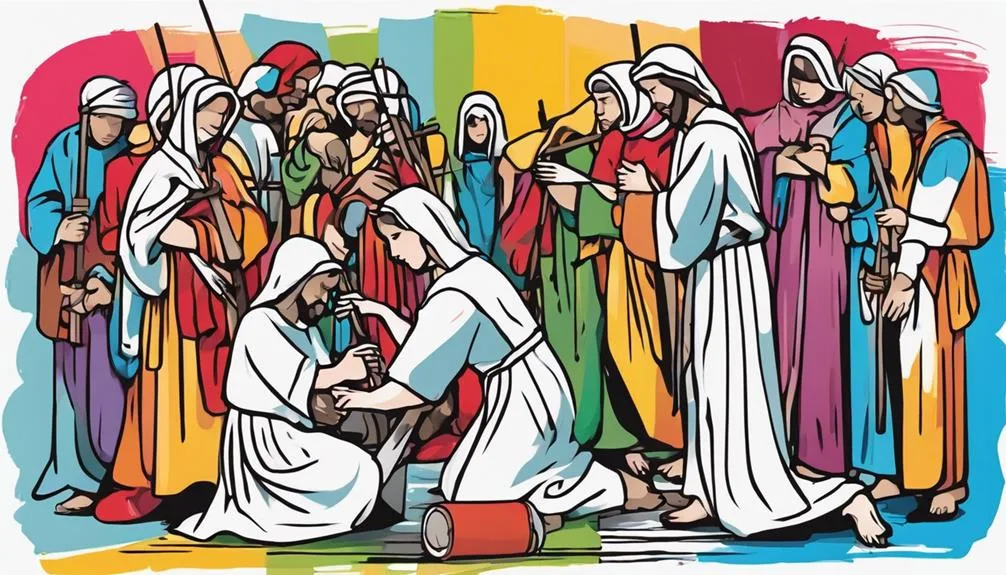
Engage your children in creating meaningful Stations of the Cross art pieces to deepen their understanding of the Easter story. This activity not only allows them to explore their creativity but also serves as a form of art therapy, providing a means for devotional expression.
Here are three ways to make the most of Stations of the Cross art with your kids:
- Reflective Art: Encourage your children to create art pieces that reflect on each station of the cross. This can help them engage with the emotions and events of the Easter story in a personal and meaningful way.
- Interactive Stations: Consider setting up interactive stations where kids can physically move through each station, creating art pieces or symbols that represent their understanding and feelings about each part of the story.
- Family Collaboration: Work together as a family to create a collaborative Stations of the Cross art piece. This can be a bonding experience that deepens everyone’s connection to the Easter narrative.
8. Create a Prayer Garden

To enhance your spiritual experience during Holy Week, consider creating a prayer garden as a tranquil space for reflection and meditation. A prayer garden provides a serene environment where you can connect with nature, reflect on your faith, and engage in peaceful meditation. Here are some tips to help you design your own prayer garden for this special time:
| Prayer Garden Elements | Description | Benefits |
|---|---|---|
| Quiet Corner for Reflection | Create a cozy nook with a bench or cushions where you can sit and ponder. | Encourages quiet reflection and contemplation. |
| Natural Elements | Incorporate plants, flowers, and stones to bring nature’s calming influence. | Enhances the sense of peace and tranquility in the space. |
| Meditation Area | Include a small area for meditation with a comfortable seat or cushion. | Allows for focused nature meditation and spiritual connection. |
Designing a prayer garden that incorporates these elements will provide you with a peaceful sanctuary for prayer garden reflection and nature meditation during Holy Week.
9. Watch a Passion Play

Consider immersing yourself in the powerful portrayal of the Passion story by watching a Passion Play. These live reenactments can deeply resonate with children and adults alike, making the events of Holy Week more tangible and impactful.
Here are three key points to consider when experiencing a Passion Play:
- Passion Play Critique: Encourage your children to discuss their thoughts and feelings about the performance. Ask them what aspects of the play resonated with them and what they found particularly moving. This can help them process the story on a deeper level and engage critically with the narrative.
- Child Participation: Some Passion Plays offer opportunities for children to participate, whether through acting, singing, or being part of the audience interaction. Involving children in this way can help them connect with the story on a personal level and feel more engaged in the experience.
- Meaningful Discussions, Emotional Impact: After watching the Passion Play, facilitate meaningful discussions with your children about the emotional impact of the performance. Talk about the themes of sacrifice, love, and redemption portrayed in the play and how they relate to the significance of Holy Week. These conversations can deepen your child’s understanding of the Easter story and its importance in the Christian faith.
10. Bake Resurrection Rolls
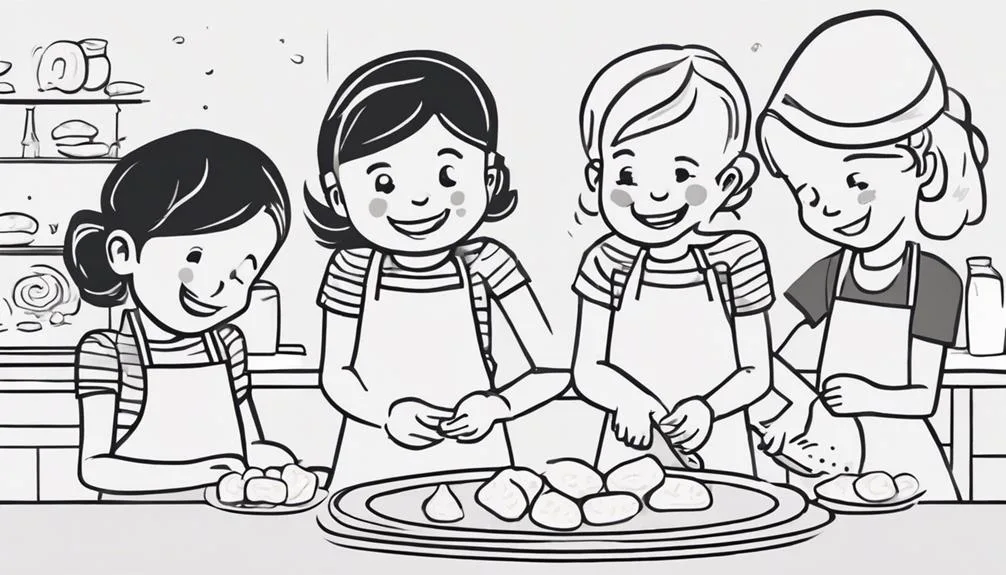
Get ready to bake delicious Resurrection Rolls with your kids as a fun and meaningful activity during Holy Week. Start by explaining to your little ones the symbolism behind the ingredients: the marshmallow represents Jesus, the dough symbolizes the tomb, and the disappearing marshmallow inside the baked roll signifies the empty tomb on Easter morning.
For the dough preparation, involve the kids in rolling out the dough and wrapping it around the marshmallows, explaining how this step represents Jesus being laid in the tomb. As you bake the rolls, talk about how the oven symbolizes the tomb, and the sweet aroma filling the kitchen mirrors the sweet scent of prayer rising to heaven.
The baking technique is simple but engaging for kids, as they eagerly wait for the rolls to turn golden brown. This activity not only teaches them about the Easter story but also fosters family bonding as you work together in the kitchen, creating lasting memories and delicious treats for the season.
11. Make a Palm Cross
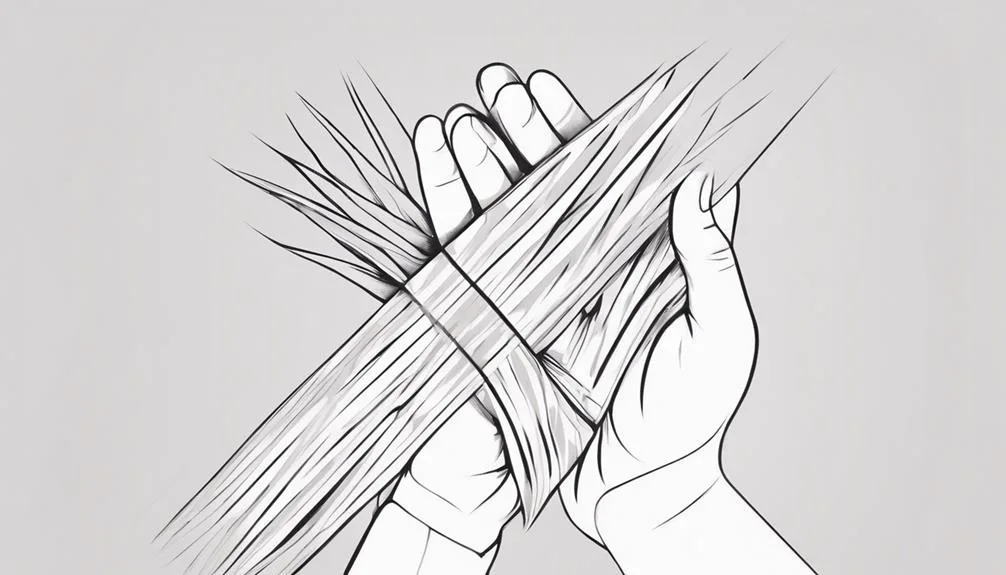
Craft a Palm Cross with your kids to engage them in a meaningful and creative activity during Holy Week. Making Palm Crosses is a cherished tradition that symbolizes Jesus’ entry into Jerusalem.
Here are some tips and facts to make the activity even more special:
- Palm Cross Traditions: Embrace the tradition of creating Palm Crosses by using fresh palm leaves or green construction paper. Teach your children how to fold and weave the leaves or paper to form a cross. This hands-on experience will help them understand the significance of Palm Sunday.
- Crafting Tips: Encourage your kids to add their unique touch to the Palm Crosses by decorating them with colorful ribbons or markers. This personalization will make the crosses even more meaningful to them.
- Palm Leaf Symbolism: Explain to your children the symbolism behind palm leaves, such as victory, peace, and eternal life. Share fun facts about how palm branches were used to honor Jesus during his triumphal entry into Jerusalem, sparking joy and hope among the people.
12. Holy Week Journaling
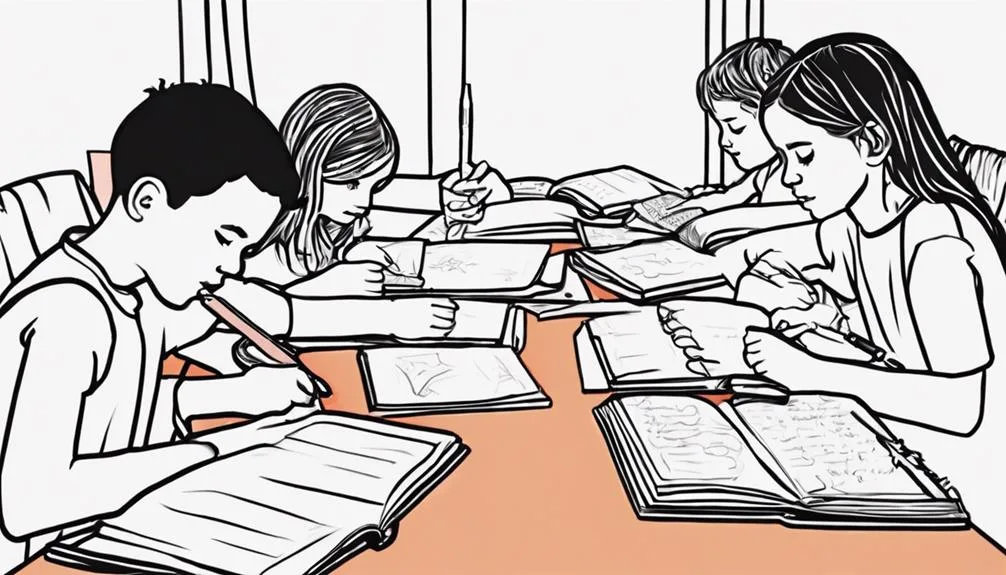
Capture the essence of Holy Week through reflective journaling. Encourage your child to express their thoughts and emotions during this significant week using a journal. Provide them with reflective prompts such as ‘What does the Last Supper teach us about friendship?’ or ‘How can we show kindness and forgiveness like Jesus did?’ These prompts will guide their reflections and help them explore deeper into the meaning of Holy Week.
Encourage creative expressions in the journaling process. Your child can draw illustrations of key events like Jesus entering Jerusalem on a donkey or create a poem about the crucifixion. This allows them to engage with the Holy Week narrative in a personal and meaningful way.
Journaling during Holy Week can be a powerful tool for children to connect with the spiritual significance of this time. Encourage them to write prayers, thoughts, and reflections each day, creating a keepsake that captures their journey through this important week. By journaling, your child can deepen their understanding and appreciation of the events leading up to Easter.
13. Visit a Church Service
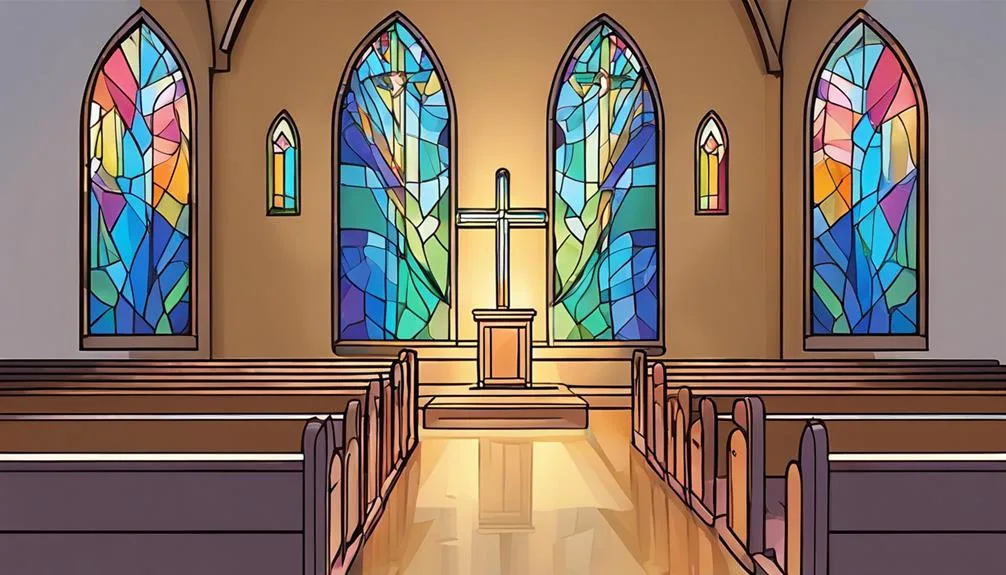
To fully experience Holy Week, consider attending a church service with your child. It can be a meaningful way to engage in the traditions and teachings of this important time in the Christian faith. Here are three things you can expect when you visit a church service during Holy Week:
- Church Tour: Many churches offer tours during Holy Week that can be enlightening for children. These tours often include explanations of the church’s architecture, symbols, and significance of different elements within the church.
- Interactive Activities: Some church services during Holy Week may involve interactive activities for children. These activities can help kids better understand the stories and events being commemorated during this time.
- Family Service, Spiritual Experience: Attending a family-oriented church service during Holy Week can be a spiritual experience for both you and your child. It provides an opportunity to worship together, reflect on the significance of the week, and bond over shared faith.
14. Good Friday Reflection Time
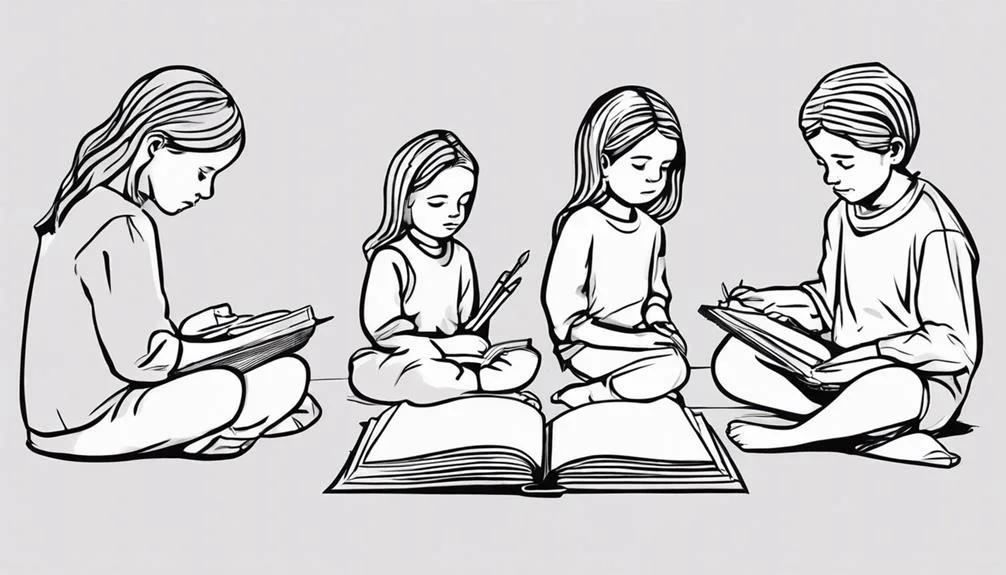
Engage in heartfelt reflection this Good Friday to deepen your understanding of the significance of this solemn day in the Christian faith. Take time for quiet contemplation, allowing the gravity of Good Friday to resonate within you. Encourage family discussion to share thoughts and insights, fostering a shared understanding and appreciation for the sacrifices made.
Find a peaceful spot where you can sit quietly and reflect on the events of Good Friday. Consider the immense love and sacrifice shown on this day, as well as the profound impact it has had on Christian beliefs. Reflect on the themes of redemption, forgiveness, and the ultimate act of love demonstrated through Jesus’ crucifixion.
After spending time in quiet contemplation, gather your family for a discussion. Share your reflections and listen to each other’s perspectives. Encourage questions and provide age-appropriate explanations to deepen everyone’s comprehension of the significance of Good Friday. Through this shared reflection, you can honor the day and its importance in the Christian faith.
Conclusion
Preparing for Easter through engaging activities like Palm Sunday crafts and Resurrection Egg Hunts offers a meaningful way for children to connect with the essence of Holy Week. These activities not only educate them about the events leading up to Easter Sunday but also instill a deeper appreciation for this sacred time.
As we guide our children through these experiences, we foster a sense of wonder and understanding that transcends the festivities, inviting them to reflect on the profound impact of these historical events. Could there be a more enriching way to anticipate the joy of Easter than by deeply rooting our young ones in the story it commemorates?

